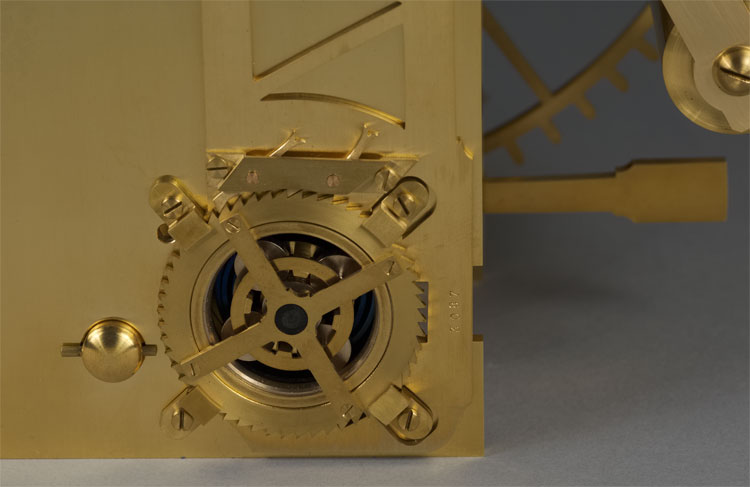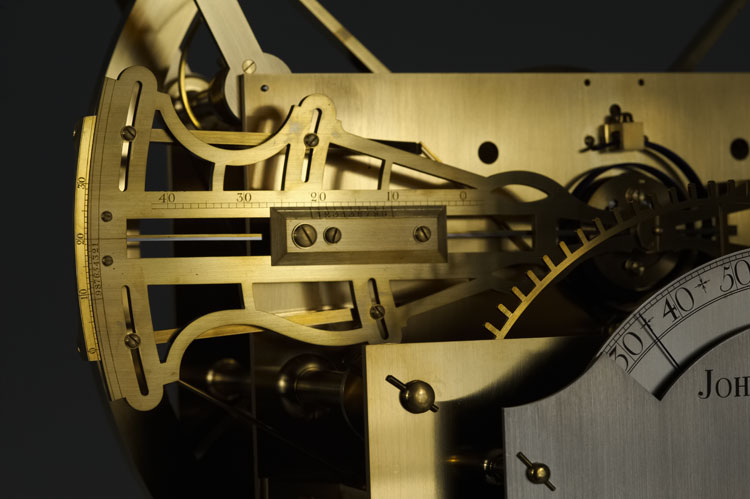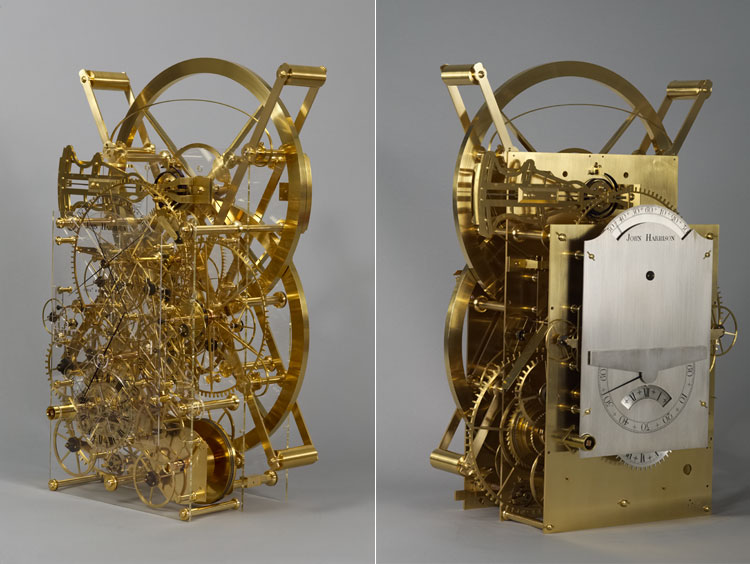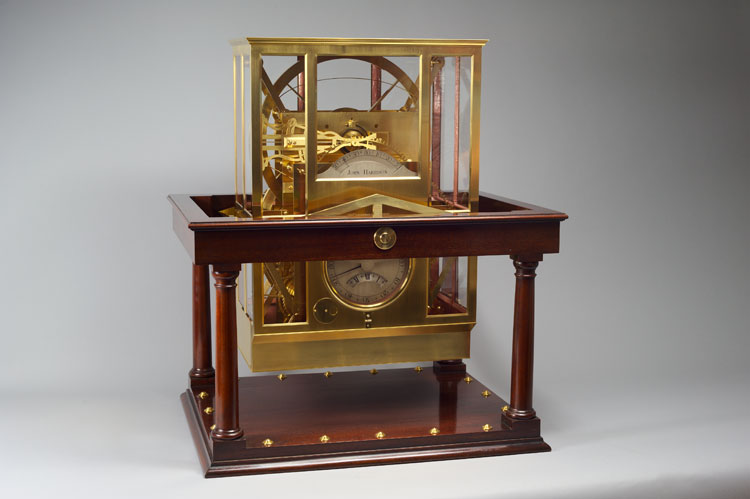Harrison H3
John Harrison’s third longitude timekeeper, H3; a Reconstruction
Of all the marine timekeepers perhaps H3 best captures the spirit of its creator John Harrison, as it incorporates two truly innovative designs, and was the catalyst for his successful Longitude prize winner H4.
Begun in about 1740, it took nineteen years to complete this enigmatic machine. Following instructions from the Board of Longitude in 1761, H3 and H4 were taken to Portsmouth in preparation for trialling, but H3 never went to sea, returning first to Harrison, before being removed to the Royal Observatory in 1766 where it has remained, except for restoration and exhibition, ever since.
The first and most important of Harrison’s seminal designs is the caged roller bearing. By pivoting four bronze rollers mounted in a light brass cage around a central pivot, this modular design to reduce friction was subsequently developed into the caged ball bearing that is now found in both billions of simple and complex machines today.

The other design, also first seen in H3, is the bimetallic strip or as Harrison called it, his “Thermometer Kirb”. Constructed as a blade of brass and steel lamina riveted together, it is mounted with one fixed end in a violin shaped frame to effect the temperature compensation on the rate of the timekeeper. The dissimilar expansion of the two metals makes the blade bow when the temperature changes. This immensely clever and effective invention has been used ever since in a vast number of other applications requiring a temperature sensitive component, most notably in thermostats and kettle switches.

The accurate reconstruction of H3 can be mounted in either, transparent plates to show its complexity or in brass plates as per the original. For exhibition purposes the timekeeper is fitted with an automatic rewind mechanism. The movement took two and a half years to complete and excluding the fusee chain contains 1170 parts. The timekeeper has a large number of anti-friction wheels throughout to reduce friction and, as in the original, lignum vitae and high and low tin bronze have been used so that it functions without lubrication. The Grasshopper escapement with its two pallet assemblies is driven by a 30-second remontoire and gives impulse to the large brass circular balances.

The movement of H3 was included as a loan exhibit in Ships, Clocks and Stars: The Quest for Longitude, at the National Maritime Museum, Greenwich, 11 Jul 2014 – 4 Jan 2015. The exhibition then travelled to the USA in 2015/16, first at The Folger Shakespeare Library, Washington DC and then at Mystic Seaport, The Museum of America and the Sea, Mystic CT, before being transferred to The Australian National Maritime Museum, Sydney Australia in 2016.
In the USA and Australia the movement was exhibited alongside a copy of the glazed brass case gimballed in a mahogany stand, as depicted in the 1766 Harrison portrait by Thomas King.

